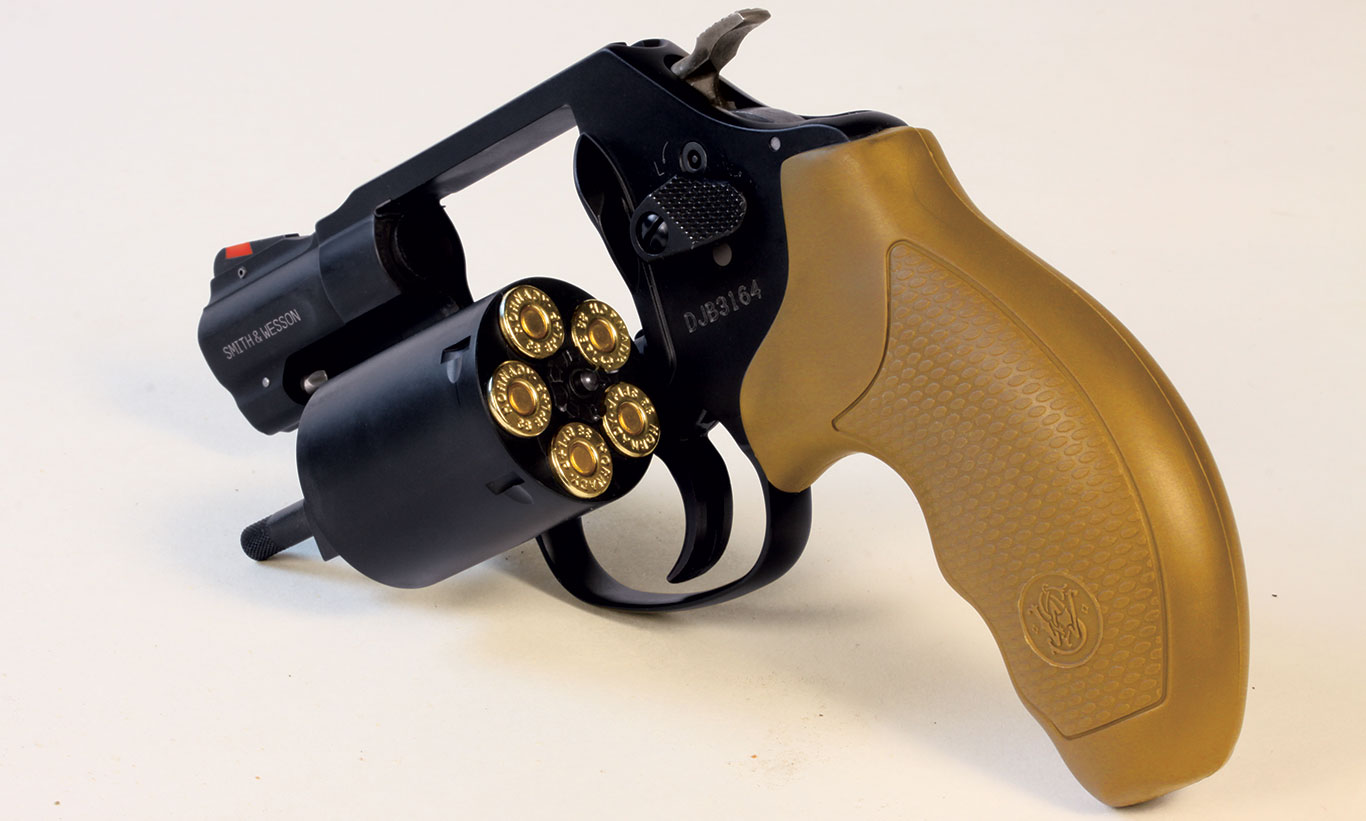
The company’s J-frame Airweight series dates back to the 1950s when these guns—chambered first to .38 Special—were built from aluminum frames and cylinders.
The snubnose revolver has been a cornerstone of concealed carry for a long time, and despite the huge influx of small, lightweight semiautomatics, the snubby hangs in there. And for good reason: It’s not only light, handy and completely reliable, it can be chambered in big-time cartridges that little pistols simply can’t match. Primarily I’m talking about the .357 Magnum, a cartridge Smith & Wesson’s Model 360 Airweight is built to handle.
The company’s J-frame Airweight series dates back to the 1950s when these guns—chambered first to .38 Special—were built from aluminum frames and cylinders. Problems with cracking led to a change to steel cylinders. Today’s Airweights feature scandium alloy frames and are among the lightest guns you can buy—and can handle a lot more power than the original .38 Special.
The new Model 360 Airweight profiled here features a scandium alloy frame, finished in black. The right side is etched with the Smith & Wesson logo and “Airweight” in cursive.

The 360 Airweight puts five rounds of .357 Magnum at your disposal, although the revolver is, of course, way more manageable with .38 +P or standard .38 loads.
The unfluted cylinder is stainless steel, also finished in black courtesy of a PVD (physical vapor deposit) finish that resists corrosion. The stainless steel barrel is 1.9 inches long. This combination produces a revolver weighing only 14.9 ounces. For comparison, my all-steel Model 640 Pro, also a J-frame snubby, weighs 22.4 ounces.
The M360 Airweight’s synthetic grips are synthetic, which comes in handy when you’re shooting hefty loads because they do soak up some of the recoil impulse. They feature finger grooves

